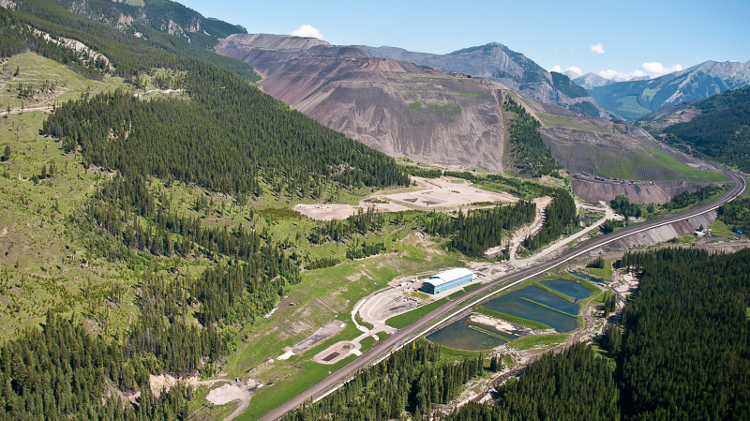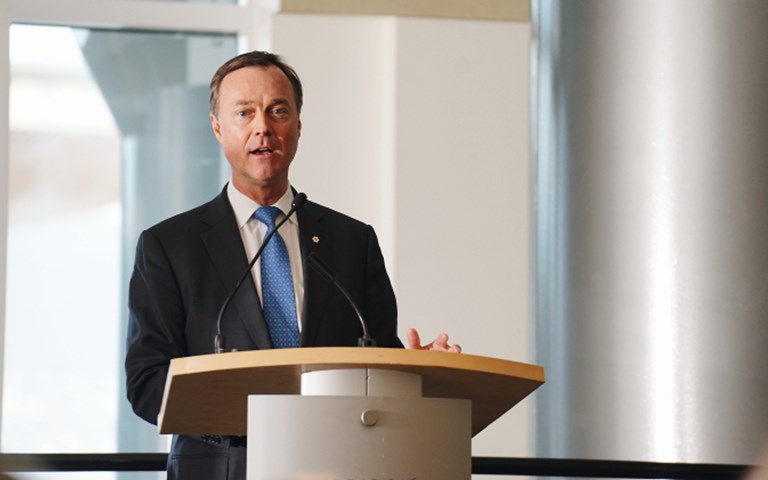Teck CEO Don Lindsay discussed the company’s partnership with Goldcorp on NuevaUnión in Chile, where their two projects, 40 kilometres apart, are being developed in a 50/50 partnership. Velour Productions/AME
Optimism, innovative partnerships and collaborative thinking were key themes at the Association for Mineral Exploration British Columbia’s (AME BC) 2017 Roundup conference, after a year that saw the beginning of a tentative recovery from a historic market downturn.
“When I’d talk to some of the old-timers, they’d say it was the longest, deepest and toughest downturn they’d ever seen,” said AME BC president and CEO Gavin Dirom, “but the needle moved in January last year, and people started to raise money through 2016.”
Goldcorp CEO David Garofalo kicked off the partnership conversation during his keynote address by explaining the company’s strategy of investing in junior exploration companies.
“We’re good at mining, but the exploration game is an entirely different risk profile and an entirely different set of skills,” he said. “Our partnerships with juniors who conduct that exploration are invaluable to us. It feeds our pipeline.”
Teck Resources CEO Don Lindsay said it was important to connect with suitable partners in a strengthening, but still volatile, market. During his address to the AME Lunch, he noted that Teck and Goldcorp were developing projects 40 kilometres apart in a 50/50 partnership called NuevaUnión (New Union) in Chile, reducing the capital costs for both companies, streamlining community relationships and reducing the environmental impact.
“As an industry, our mindset has to change,” said Lindsay. “If we want to reduce our footprint, working together is the only way to go.”
B.C. Premier Christy Clark announced the provincial government would extend the flow-through tax credit, an initiative to make the province a more attractive place to explore, in her address at the lunch. She also announced a $10 million investment over two years in the generation of public geoscience information through the continued work of Geoscience BC.
Geoscience BC, a non-profit earth science organisation, released the results of a magnetic survey covering 24,000 sq km in west-central B.C. know as Search Phase II, which brings the total area surveyed by the organization at higher resolution and better accuracy to 55,500 sq km.
Mines minister Bill Bennett, together with his opposition critic NDP legislator Doug Donaldson and B.C. Green Party Leader Andrew Weaver, faced tough questions at the B.C. Government-Industry Political Forum. Land access and the public’s trust in its governance were hot topics. Although there was no mention of the former First Nation chief who staked Bennett’s private property in the Kootenays days earlier, the subject of how easy it is to stake land in B.C. did arise.
In response to a question from Hereditary Chief Geel (Catherine Blackstock) of the Gitxsan Nation in northwestern B.C., Bennett said the government should communicate more clearly what staking a claim involves and that it is just the first step, giving permission to the claimant to apply for permits to explore.
“The next step is to work with AME to make sure everyone is aware of what it means when you register a claim online,” said Bennett. “You can’t go dig a hole but it gives you the right to apply for a permit to dig a hole, and that process allows for consultation with communities and First Nations.”
Held in Vancouver from Jan. 23 to 26, the conference was attended by 5,834 participants from 43 countries, an eight per cent increase from 2016’s 5,400.




